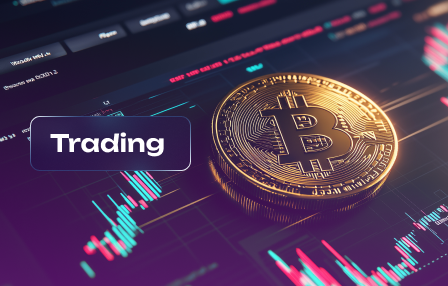The Pros and Cons of OTC Trading for Retail Investors
March 9, 2025
For those looking to enhance their portfolio, engaging in over-the-counter mechanisms can provide significant liquidity benefits. This less regulated environment often presents opportunities to acquire assets that are not readily available on traditional exchanges, allowing savvy players to capitalize on price discrepancies and unique investments.
However, the allure of accessibility comes with its share of pitfalls. Investors must remain vigilant, as risks associated with these transactions can include a lack of transparency and potential for fraud. The absence of regulatory oversight might lead to unfavorable conditions that could impact long-term performance.
Evaluating the pros is essential: enhanced liquidity can facilitate quicker trades and wider selections. Yet, understanding the cons is equally vital; without stringent regulations, one might encounter unreliable counterparties or inflated prices. Balancing these factors will be key for anyone venturing into this domain.
Cost Implications for Traders
Understanding the financial aspects of engaging in decentralized asset exchanges is crucial for retail participants. Here’s what to consider:
- Transaction Fees: While some platforms advertise low fees, hidden charges may apply. Scrutinize fee structures carefully to avoid surprises.
- Bid-Ask Spread: Liquidity can impact spreads significantly. Less liquidity often translates to wider spreads, affecting the overall cost of entry and exit.
- Market Volatility: Price fluctuations can lead to unexpected costs. Monitor market conditions regularly to manage risk effectively.
Balancing accessibility with expenses is key. Here are specific strategies:
- Use Limit Orders: Implementing limit orders can help control purchase prices, reducing the chance of overpaying during rapid price changes.
- Diversify Trading Platforms: Engaging with multiple venues may minimize costs associated with specific exchanges and provide better pricing opportunities.
- Regularly Review Costs: Periodic analysis of transaction fees and spreads can reveal patterns that aid in optimizing trading approaches.
A clear understanding of cost implications empowers retail traders to make informed decisions, mitigating risks while maximizing potential gains. Prioritize due diligence to navigate this complex environment successfully.
Liquidity Concerns in OTC Markets
Retail participants must approach liquidity in these markets with caution. Lower volumes often lead to higher spreads, increasing the cost of execution. This can significantly affect overall returns, especially for smaller trades. When liquidity is scarce, prices may not reflect the true market value, leading to slippage during transactions.
Investors should be aware that the lack of transparency may exacerbate these issues. Without centralized exchanges, it becomes challenging to assess real-time pricing or find counterparties willing to transact at anticipated levels. Consequently, executing large orders can push prices unfavorable, impacting profitability.
Another risk arises during periods of volatility. Market fluctuations can result in sudden drops in liquidity, leaving traders unable to exit positions without incurring substantial losses. Therefore, it’s prudent to consider the size of the investment and the potential exit strategy before committing funds.
Retail investors should also evaluate alternative options with more robust liquidity profiles. Engaging with liquid assets reduces potential risks associated with execution and allows for better management of price movements. Conducting thorough research on specific securities will help gauge their trading activity and market interest.
In summary, addressing liquidity challenges requires vigilant assessment and strategic planning. Understanding these factors empowers participants to navigate this complex environment effectively, mitigating risks associated with low liquidity. Make informed decisions based on solid analysis rather than speculation.
Regulatory Environment Impact
Understanding the regulatory framework is critical for participants in less formalized markets. Regulations can enhance or diminish accessibility to a broader range of assets, influencing how retail traders approach their portfolios. When regulations are stringent, it may restrict participation, particularly for smaller players who face higher compliance costs.
In contrast, a more lenient environment can increase liquidity by allowing a wider array of instruments to be traded without the burden of complex rules. This opens doors for innovative products but also carries risks. Investors must be cautious about engaging with less regulated entities, as the potential for fraud increases significantly.
Market surveillance practices vary widely across jurisdictions. In regions with robust enforcement, investors experience greater protection against market manipulation. Conversely, weak oversight creates opportunities for unscrupulous operators to exploit the system, leaving retail traders vulnerable.
Education on these dynamics is paramount; investors should actively seek information regarding regulatory changes that could impact liquidity and risk management strategies. By staying informed, they can make better decisions that align with their financial goals while navigating the complexities of the market.
Ultimately, understanding the regulatory landscape empowers participants to weigh their options carefully and adjust their trading practices accordingly, ensuring they mitigate risk while maximizing opportunity in an often unpredictable environment.
Access to Unique Assets
Retail participants can tap into exclusive investment opportunities through less conventional markets. This accessibility enables engagement with niche products that may not be available on mainstream exchanges, enhancing portfolio diversification.
Unique assets often include derivatives, foreign stocks, or emerging market securities that hold potential for higher returns. For investors willing to navigate the complexities of these offerings, there are substantial rewards. However, this access comes with notable risks; the lack of transparency and standardized pricing can lead to mispricing and difficulties in valuation.
The liquidity of these unique instruments varies significantly. While some products may exhibit robust trading volumes, others might suffer from limited buyers and sellers, posing challenges when attempting to exit positions. It’s essential for retail investors to thoroughly assess liquidity before committing capital.
Understanding the associated risks is vital. Engaging with unique assets can amplify gains but also magnify losses, especially in volatile markets. Investors should conduct diligent research and consider their risk tolerance before diving into these alternative investments.
Transparency and Information Gaps
Retail participants should prioritize understanding the transparency levels in less regulated venues. The lack of standardized reporting can create information asymmetries, making it harder to evaluate asset valuations accurately. Investors often face challenges in accessing timely data, leading to potential mispricing or uninformed decisions.
Market dynamics in these environments can obscure true trading volumes and price movements. Without comprehensive insights, assessing the risk associated with specific assets becomes complicated. Retail players may find themselves at a disadvantage compared to institutional counterparts who have better access to market intelligence.
To mitigate these risks, consider leveraging third-party analytics and research platforms. These tools can help bridge the information gap, offering more clarity on market behavior. Additionally, fostering connections within investment communities can provide valuable insights that enhance decision-making capabilities.
Ultimately, vigilance is key; ensuring a thorough understanding of available information resources is essential for navigating these opaque markets successfully. Engaging with professionals and utilizing technology can improve accessibility to critical data points that influence trading outcomes.



